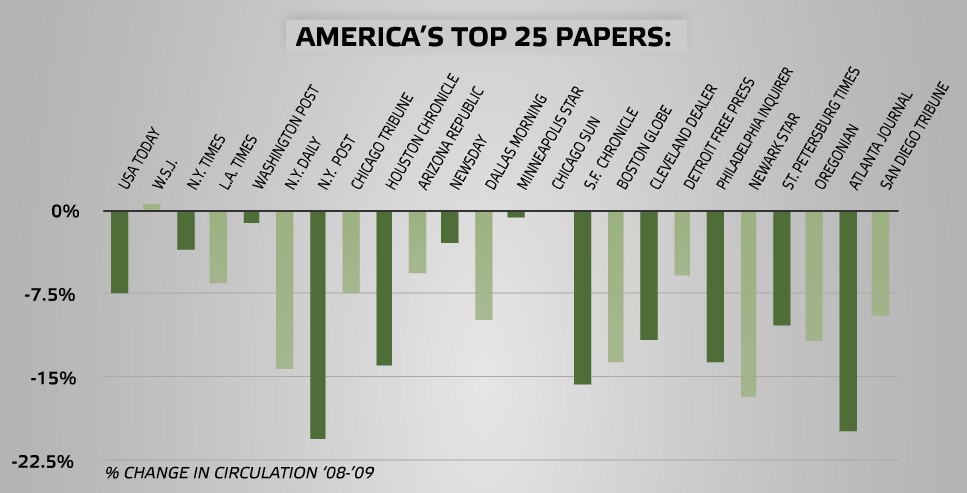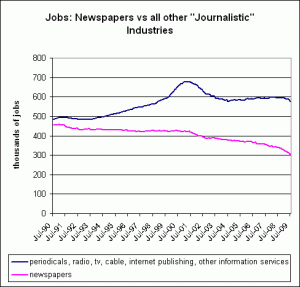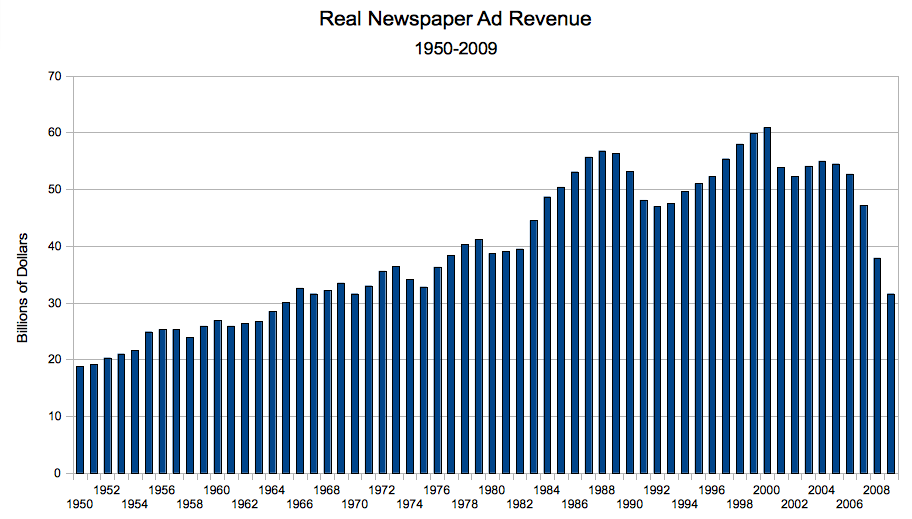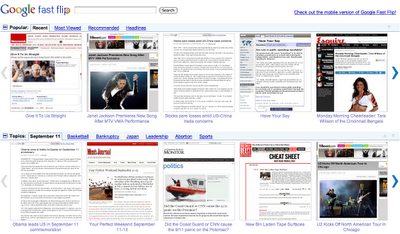Boston.com profiles Stephen Taylor and Platinum Equity the two bidders for the Boston Globe. They’re long profiles, so here’s the Cliff Notes version.
The Fixer
Platinum’s Tom Gores has been profiled here before, but the Globe updates his turnaround track record. Gores has been quoted as saying that he isn’t a pump-and-dump investor. He believes that local media is a good and necessary business and that there are bargains in the market right now.
Platinum’s most notable media deal was its acqusition of the San Diego Union-Tribune early this year. While it cut deeply – laying off 28% of its staff – it has also invested selectively, including upgrading the production system to computerized pagination and helping to fund a local news startup. Observers and past business associates say Gores and partners are brilliant acquirers who take a deep interest in turning around the businesses they buy but who leave the front-line details to hired hands.
They certainly have money to work with. The partners turned the 2006 million acquisition of steel distributor PNA Group for $18 million into a $450 million sale just two years a later. That’s a return of 2,500%. Most of their turnaround jobs aren’t that fast, but they rarely hold an asset beyond five to seven years.
The partners have a record of firing a lot of expensive top executives and buying whatever resources are needed to make its acquired operations profitable. Platinum has certainly got its eye on the media these days. It’s reportedly looking at buying BusinessWeek and the Austin American-Statesman, among other properties.
Local Hero
 Stephen Taylor is the hometown favorite for his Boston roots and long history with the paper.
Stephen Taylor is the hometown favorite for his Boston roots and long history with the paper.
Taylor worked in a wide variety of roles at the Globe during his career, ranging from reporter to janitorial staff manager to founding publisher of Boston.com. He was in charge of the Globe’s technology, presses, and buildings when the operation was sold to the New York Times Co. for $1.1 billion in 1992. A technologist at heart, he spearheaded the Globe’s innovative strategy of launching Boston.com as a regional news destination rather than a newspaper-branded website. He also tried, unsuccessfully, to get Globe management interested in investing in Monster.com.
Taylor’s family is filthy rich, but legal restrictions make most of that money unavailable to Taylor for the Globe bid. He’s teamed with his second cousin and former Globe publisher Benjamin B. Taylor and another cousin, Alexander “Sandy’’ Hawes. The bid is considered a long shot, however. The Taylor team is up against Platinum Equity’s financial might and its track record. Local investors have been reluctant to invest in what they fear is a dying industry and Taylor himself has been out of the business for a decade.
Greeen Light for Sun-Times Sale
A Delaware bankruptcy court has cleared the way for the sale of the Chicago’s Sun-Times Media Group (STMG) after the company’s biggest union voted to accept a package of “painful” wage and benefit cuts. The Newspaper Guild had earlier rejected a proposal that called for sweeping wage reductions and limited severance for laid-off workers, but members came around when it became clear that the company will fail if the offer by local investor Jim Tyree deal doesn’t go through.
The proposed agreement still calls for big pay cuts but doubles severance terms to eight weeks for any employees laid off during the first six months under new ownership. It also provides for layoffs to be based on performance rather than cost. The latter provision is meant to protect more senior workers from being disproportionately affected by job cuts. Tyree’s proposed $26.5 million purchase goes before a bankruptcy court today. No other bidders have emerged from the bankrupt company.
Meanwhile, a Chicago investor is crying foul, saying he was blocked from talking to the STMG unions about a potential joint bid for the company. Thane Ritchie, founder of Ritchie Capital Management in Lisle, Ill. said unidentified parties told him he couldn’t team up with the unions on a bid for legal reasons. Apparently, that just ain’s so. Ritchie is urging the Guild to petition the court to re-open the bargaining process.
Miscellany
Business leaders continue to offer positive comments about the state of the economy and the advertising business. Google CEO Eric Schmidt told reporters early this week that business is bouncing back in both the U.S. and Europe. “We are increasing our hiring rate and investment rate in anticipation of a recovery,” he said. Google is also beginning to open its wallet for some acquisitions, although targets will probably be small companies, Schmidt said. The comments contrast sharply with Schmidt’s comments of just three months ago, when he said it was too soon to tell if the worst is over.
Rupert Murdoch’s recent comments echo Schmidt’s. The publishing tycoon told a Tokyo conference early this week that “We are seeing newspaper advertising coming back, though not yet to its previous levels,” he said, adding that “Television is still the strongest way to advertise.”Murdoch called the turnaround earlier than most. He told a New York conference last month that US advertising markets are “very much better than they were four months ago.” However, he said the improvement is likely a short-term bump to be followed by a long, flat recovery.
 Former Baltimore Sun copy chief John McIntyre’s “You Don’t Say” blog should be on the reading list of any dedicated journalist. His Tuesday entry takes aim at the way journalists are taught to write which is, in his words, “appallingly, relentlessly, unapologetically DULL.”
Former Baltimore Sun copy chief John McIntyre’s “You Don’t Say” blog should be on the reading list of any dedicated journalist. His Tuesday entry takes aim at the way journalists are taught to write which is, in his words, “appallingly, relentlessly, unapologetically DULL.”
McIntyre cites examples like the tortured excerpt below as an example of why readers are defecting to blogs. In an effort to squeeze as much information as possible into an inverted-pyramid lead, the writer succeeds in making his prose impenetrable. McIntyre also attacks cliche-ridden anecdotal leads and journalism lingo in particular in this amusing and painfully accurate essay:
Completion of a tower that will give Phoenix Sky Harbor International Airport controllers technology and visibility to monitor air traffic for the foreseeable future, settling a contract that will keep the controllers on the job and redefining air space corridors, are keys to the Valley airport’s future, Robert Sturgell, FAA deputy administrator, said Thursday.









 Newspaper layoffs have hit young people the hardest
Newspaper layoffs have hit young people the hardest




